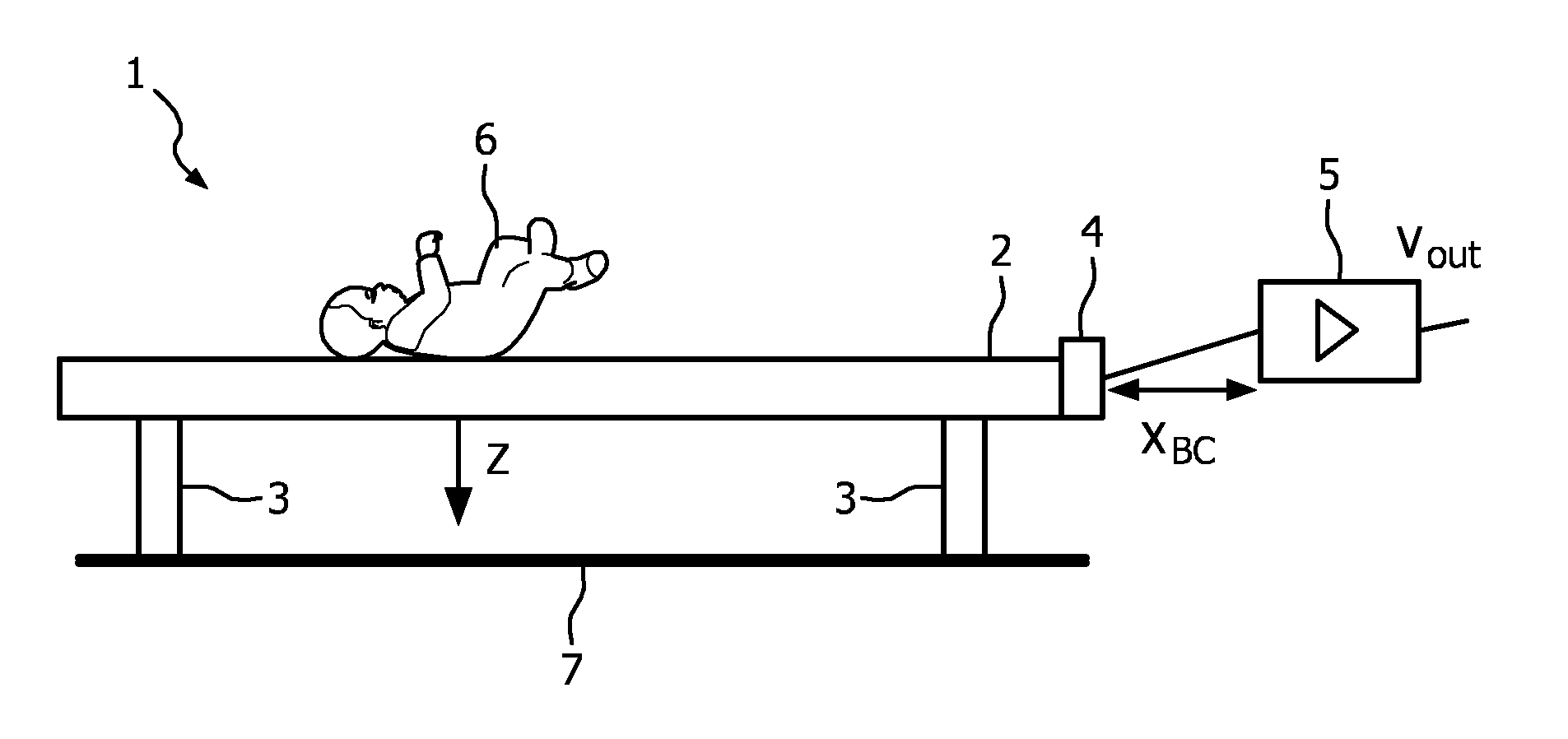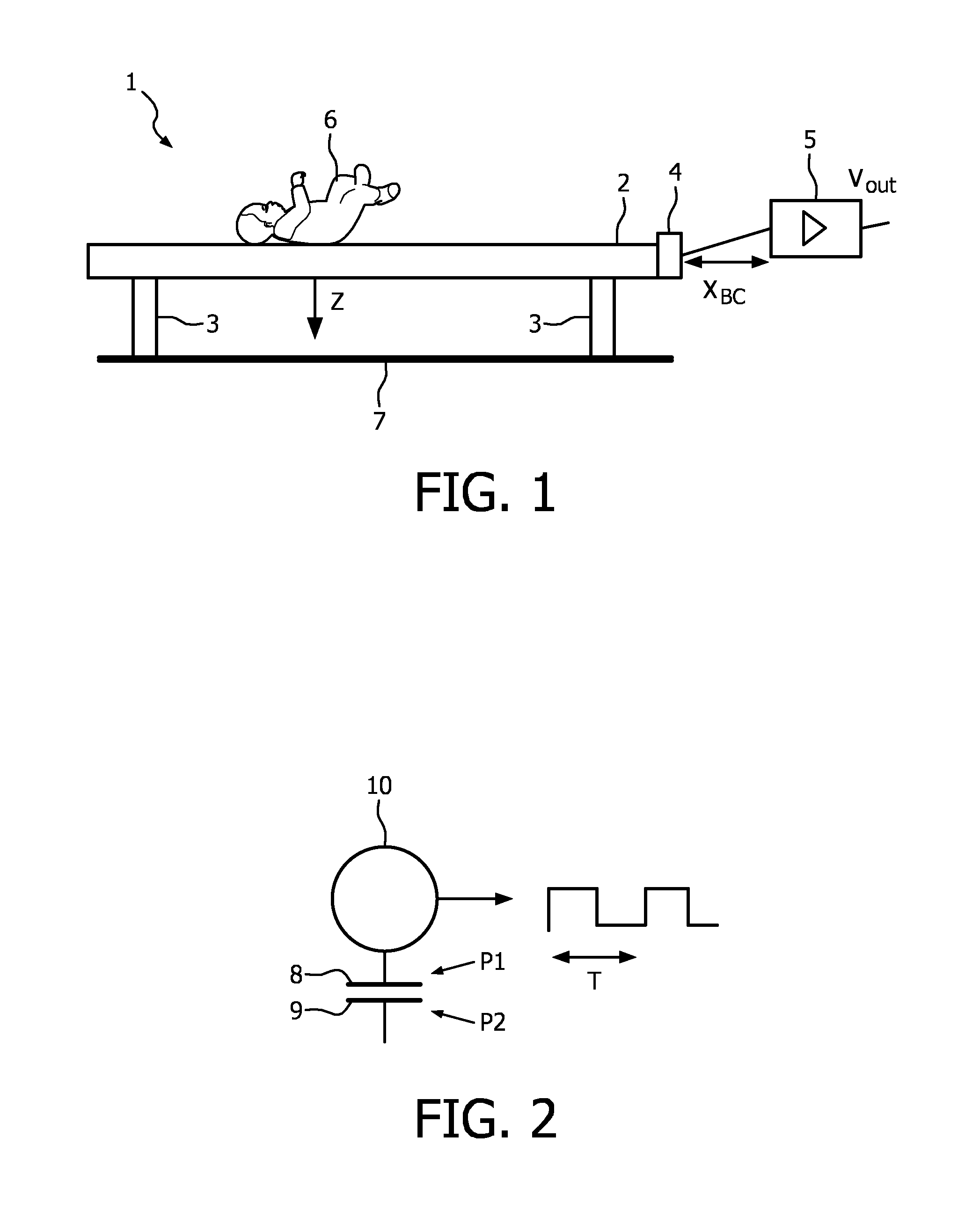Heart rate measuring device
a technology of heart rate and measuring device, which is applied in the field of heart rate measurement, can solve the problems of high cost of implementation, poor safety, and poor skin quality of children, and achieve the effect of low cos
- Summary
- Abstract
- Description
- Claims
- Application Information
AI Technical Summary
Benefits of technology
Problems solved by technology
Method used
Image
Examples
Embodiment Construction
[0030]It is a general idea of the invention to use a motion sensor adapted for measuring a movement in a horizontal direction rather than in the vertical direction relative to the ground. This makes no modification of the holder necessary and the force due to the aortic arch impulse is mainly oriented in the horizontal direction while in a direction perpendicular to the horizontal direction, i.e. in the vertical direction relative to the ground, the forces are much smaller.
[0031]FIG. 1 schematically shows a baby or neonate 6 lying on a holder 2 operatively connected to a motion sensor 4, wherein the ground 7 is the “fixed world”, also referred to as fixed ground. The heart rate measuring apparatus 1 comprises the motion sensor 4 corresponding to an electrical motion sensor according to a preferred embodiment of the invention. The motion sensor 4 comprises a capacitive measuring system which is applied according to the preferred embodiment of the invention. The holder 2 is adapted fo...
PUM
 Login to View More
Login to View More Abstract
Description
Claims
Application Information
 Login to View More
Login to View More - R&D
- Intellectual Property
- Life Sciences
- Materials
- Tech Scout
- Unparalleled Data Quality
- Higher Quality Content
- 60% Fewer Hallucinations
Browse by: Latest US Patents, China's latest patents, Technical Efficacy Thesaurus, Application Domain, Technology Topic, Popular Technical Reports.
© 2025 PatSnap. All rights reserved.Legal|Privacy policy|Modern Slavery Act Transparency Statement|Sitemap|About US| Contact US: help@patsnap.com


